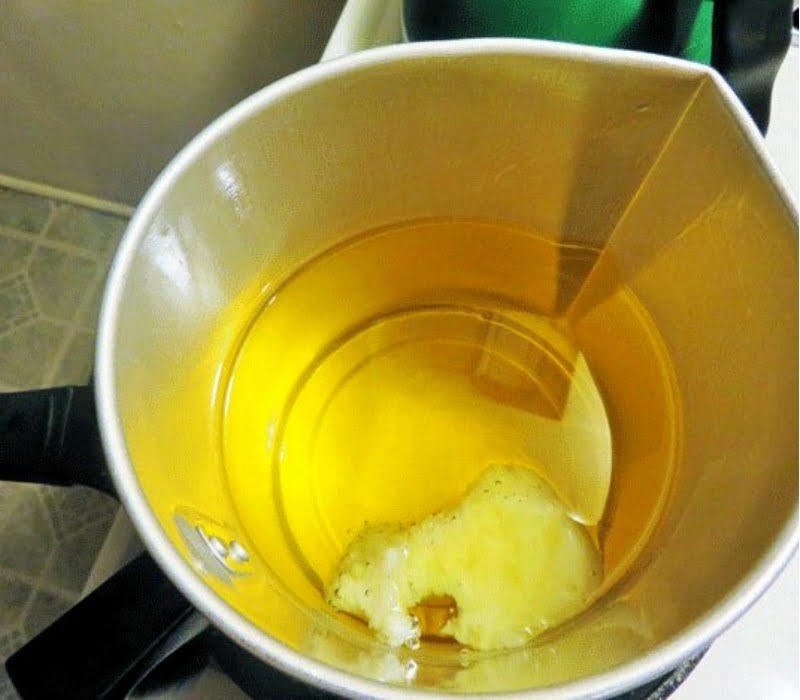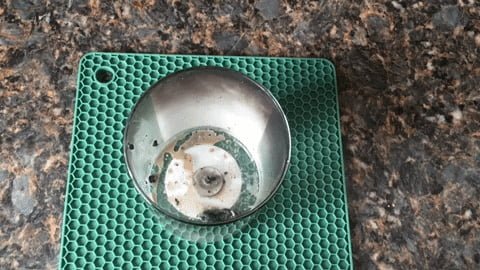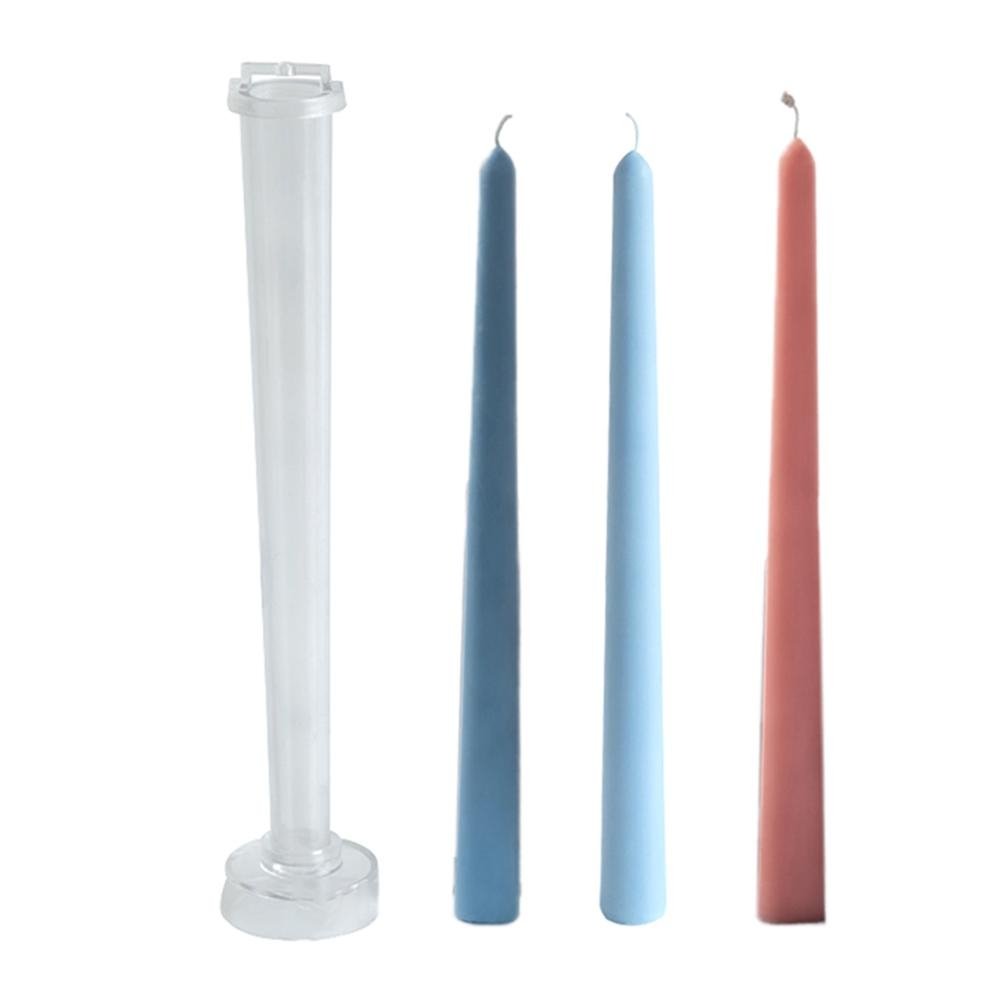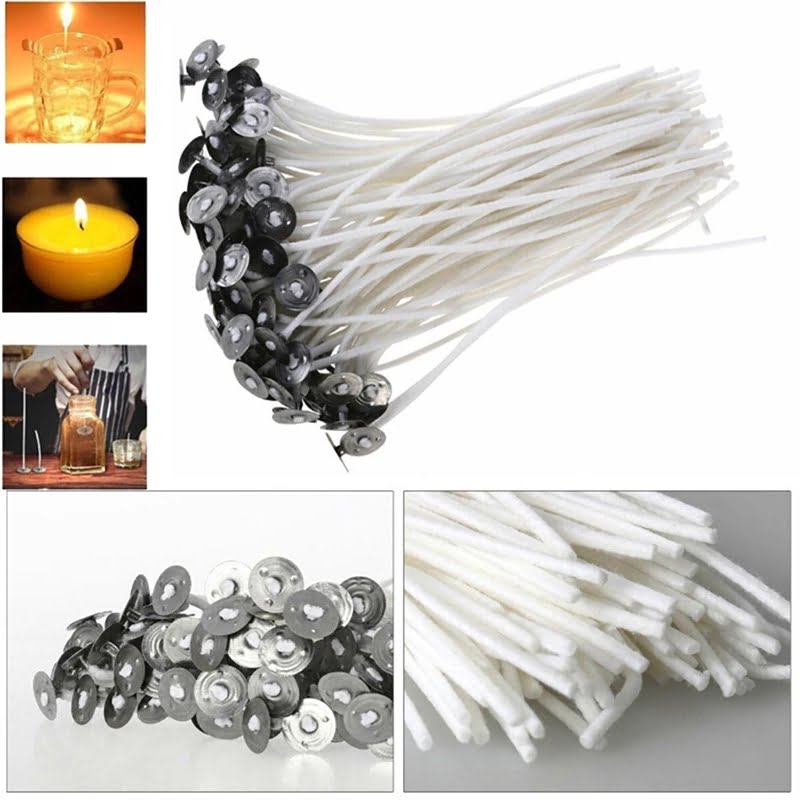Introduction
Candle making wicks are one of the most important elements of candle-making. Wicks provide fuel for the flame of a candle in order to keep it burning, and as a result, it is important that candle makers select the right type of wicks for their particular needs. There are many different types of wick available and each type should be chosen according to the size and type of wax used in the candle. In addition to the diameters they come in, wicking materials also include natural fibers such as cotton or uncured paper pulp, and synthetic fibers such as nylon or zinc covered steel. Furthermore, some wicks have been treated with various chemicals or additives to increase their burn rate. It is important to consider how these treatments may affect your candles when selecting a suitable wick material. Additionally, when trimming your candle’s wick it should always be done carefully with clean scissors in order to ensure an even burn and prevent smoking. Finally, when candles have finished burning their container should be checked for any remaining wax before disposing safely.
Different Types of Candle Making Wicks
When it comes to making candles, there is no one size fits all solution when it comes to choosing the right wick. As each candle style has its own unique needs, different types of wicks are needed in order to maximize overall performance. Some of the most commonly used wicks for candle making include zinc core wicks, cotton core wicks, paper core wicks, and braided (flat) cotton-paper blend wicks.
Zinc core wicks are highly popular in container candles due to their ability to help create strong candle flames and resist drowning from excessive wax puddles. However, zinc-cored strings can cause sooting if the burn temperature is too high. When selecting a zinc-core wick for a container candle it is important to remember that size does matter as it can have an impact on overall burning success.
Cotton core wicks are ideal for container candles as well due to their ability to reduce the amount of soot compared to zinc-cored strings. Additionally, cotton-core strings have become increasingly popular among hand dipped and self-made container candles because they require less maintenance while burning than scraped or zinc cored strings’ which require frequent readings and constant adjustments throughout the burning process.
Paper Core Wicks are made with a stiff paper center that makes them more suitable for use in floating candles as opposed to traditional taper or jar/container candles since the paper will assist in holding up the wax around it better than single braids do alone. Typically when using these types of supports you should consider an initial pre burn melting so that they become embedded within your candle wax better during the final burn stage.
Braided Cotton-Paper Blend Wicks are great options for molded or heavy cup candles as they provide a larger surface area compared to other versions of string styles, thus enabling them produce larger amounts of heat which helps prevent dripping from dripping when working with denser types of waxes such as beeswax and paraffin blends. Additionally, this type of ‘wick’ can also be used when making soy or palm wax blends too; however you must remember their relatively small circumference may cause your flame height appear low at first but eventually grow naturally once finished burning.
Natural Wicks
Cotton wicks are the most popular, widely used type of wick for candle making. They are often made out of 100% unbleached cotton thread and can easily be found online or in craft stores. Cotton wicks burn steadily and create a straight flame, making them ideal for container candles. On top of that, they have a good capacity for fragrance, allowing you to add additional scents to your candles without hindering the burning process.
Hemp wicks are fast becoming popular among candle makers due to their eco-friendly nature and excellent burning performance. As with cotton, hemp has a high capacity for adding extra scent while burning off slowly, producing clean wax pools with strong internal fragrance levels. One advantage that hemp has over cotton is that it absorbs more beeswax – which can make it easier to use if you’re making filled containers – plus considerable in its resistance against ash build up on the wick itself during the burning process.
Wooden wicks provide an earthy vibe to any kind of container candle when notched properly, offering a pleasant crackling sound when it burns down; this along with their added authenticity will add an additional layer of sense appeal to any candle created with them. Though not recommended for use in heavily fragranced candles due to their lower capacity compared to other materials listed here, wood wicks still produce excellent flame tops and virtually no smoke when used properly – plus you’ll get some customization options due to certain types of wood potentially requiring different depths for optimal performance depending on where you plan on placing the wooden core upon completion.
Synthetic Wicks
Synthetic wicks, such as those made from nylon and coreless materials, are the best types of wicks for making candles. Synthetic wicks have a tightly wound structure that helps them to stay upright and offers stability when burning. Furthermore, they’re able to resist extreme temperatures better than natural cotton wicks and don’t require any pre-treatment before use. This makes them ideal for more demanding formulations such as waxes with higher melting points or fragrances that can break down natural fibers. Additionally, synthetic wicks come in a wide variety of textures, sizes and styles so they can easily accommodate just about any candle design. Even when dipped into molten wax their shape isn’t disturbed due to their tight internal structure. This is beneficial if you’re trying to replicate complex designs or braiding multiple wicks together. Finally, synthetic wicks require minimal trimming because they don’t run excessively due to their fixed tightness.
Synthetic waxes are also an excellent choice when making container candles because they self-extinguish when there’s no longer enough fuel and oxygen inside the vessel. This prevents the molten wax from spilling outside the container which could be dangerous. Additionally, some more specialized synthetic wick materials are specifically designed so that the candle flame won’t overheat or burn too quickly – this is especially important for longer burn time candles like jar candles and pillars. As with anything else related to candle making, the best results will depend on using suitable tools and materials for your project’s specific needs; however, generally speaking synthetic wickers often offer reliable performance that’s hard to beat!
Factors to Consider When Choosing the Best Candle Making Wick
The type of wax you use is an important factor to consider when choosing the best candle making wick. Depending on the kind of wax being used, certain wicks are better suited for burning with different types of wax. Natural beeswax is more finicky, so it burns better with flat braided wicks made from cotton or bamboo fibers. Soy and paraffin wax work best with a round braided coreless wick that has a paper bonded filament. Additionally, keep in mind whether your candles will be scented or unscented as this can also affect which type of wick works best. Scented candles require a higher quality wick that can withstand the larger amounts of heat required to burn fully while providing a rich scent throw they both must also be primed with additional wax before being used.
Wicking size is another important factor to consider when choosing the right candle making wick, as too small or too large of a wick won’t perform properly and could lead to your candles not burning correctly. When choosing the size of your candlemaking wicks, the ideal width should be equal to one-third or half of the diameter of your container or mold. This ensures proper melting and burning for your project. Furthermore, if you’re creating twin-wick projects, make sure each individual strand is sized appropriately for its respected depth—basically divide your total desired Wick diameter by two when sizing up twins!
Choosing the Optimal Length of Wick & Flame Size
When selecting wicks for candle making, it is important to consider both the length of the wick and the flame size. Ideally, you will want to choose a wick that is both strong and capable of producing the right size flame. Choosing an appropriately sized wick should be based on a few factors, such as the size of your container, type of wax used, and fragrance load. The optimal flame size should be roughly 1/4 inch in height with a slight curl at the end. Too small of a flame can cause the wax to burn inefficiently and too large of a flame can cause soot.
The length of your wick should also be taken into consideration when making candles. This can be determined by submerging your wick in melted wax and measuring how far it sinks down into the wax before floating back up in suspension. If your chosen wick is too short, it will either not reach down all of way or only reach down just enough that it cannot entirely consume all available fuel from the melted wax – resulting in smoke being produced instead of soothing light from burning candle. If your chosen wick is too long, it could result in an unreasonably large flame which has previously been discussed. Furthermore, if you are using molds to create candles, account for their depth and make sure to choose a length that can support this factor; whereas you may require longer lengths for shorter molds due to less ‘fuel’ per inch being available compared to deeper molds which have more fuel available per inch.
Controlling Soot Growth & Smoke Output
When it comes to making candles, the wick is a key component of the whole process. Choosing the right candle making wick is not only important for achieving an even burn but also controlling soot growth and smoke output. There are several types of materials available in various sizes and styles that can be used effectively as candle making wicks. For example, cotton, paper/wooden core, zinc core and even metal core wicks are all great options when it comes to creating quality candles with minimal soot development or smoke production. Cotton wicks tend to be the most popular choice among hobbyists as they tend to be cost-effective and provide consistent burning quality throughout a candle life span. Paper/wooden core wicks are a bit more expensive but are great for preventing soot buildups as well as increasing overall burn time. Alternatively, zinc or metal-core wicks are also great for reducing potential soot formation and accelerating burn rates compared to other standard materials but may require additional expertise when working with them due to their increased stiffness. Regardless of which material you choose, properly sizing a wick is essential for ensuring consistent burning conditions between candles of different shapes & sizes. Remember to take into account factors such as wax type & melting point when deciding which size wick will work best with your project. Ultimately, choosing the right candle making wick can make or break your final product!
Maximizing Level of Fragrance
When making candles, deciding on the right wick will help you achieve the maximum level of fragrance desired. Different wicks come with different characteristics and flame sizes. The size of the wick’s flame will affect how much scent is thrown off by the candle, so you’ll want to choose a wick according to this. For example, a small or low-flame candle wick may be great for smaller containers and thick waxes that need more time to melt, but it will give off less fragrance than larger sizes do. Likewise, a higher or wider diameter candle wick can have a much larger flame which usually gives off more fragrant aroma quickly in comparison to slim-core wicks. However, if used in certain types of wax formulas or container sizes it could cause your candles to burn too quickly as well as flicker and smoke. Therefore, once you’ve got an idea of the type of wax and container you plan on using for your candle making project, selecting the best sized wick for optimal fragrance throw is key!
Estimating the Proper Size of Wick for Your Container
When picking the appropriate wick size for your candle making project, there are several factors to consider. First, you’ll need to accurately measure the inner diameter and also the height of your container. The size of wick will then be determined by taking into account traits such as container shape, type of wax used, and desired scent throw of the finished product. For example, a narrower container or shallow votive requires a smaller wick than a wider container or deep jar. The amount and type of fragrance oil used will determine how much heat is created by the burning candle so be sure to refer to specific instructions on how much wax each size of wick needs to consume. Lastly, adding a metal sustainer tab can help support larger-sized wicks in deeper containers if needed. To ensure best results, always use self-trimming or pre-tabbed wicks that are specifically designed for the type of wax being melted in your candles.
Care & Maintenance of Candle Making Wicks
Candle making wicks are essential for creating stylish and fragrant candles. There are a variety of different types of candle making wicks available on the market, ranging from zinc core to cotton to hemp. The most important thing to keep in mind when picking one is that they should fit the type of wax and container you’re using. It’s also important to trim the wick regularly so your candle doesn��t generate too much smoke when lit.
In addition to selecting the right type of wick, it’s important to take proper care and maintenance of them. Before each use, inspect the wicks by running your fingers over them or looking at them through a magnifying glass; if there is significant buildup around the wick causing it not to burn evenly, twist or cut off any excess areas until your flame is healthy and even. If the area around your candle gets sooty after burning, try adding a few drops of borax mix into a cup of water and spraying onto the area with an atomizer bottle; this will help reduce smoking. Finally, always make sure you let a newly poured candle cool for several hours before lighting it; rush cooling can cause gaps in your wax pool, thus reducing scent throw or leading to tunneling!
Tips for Finding the Perfect Candle Making Wick for Your Needs
When it comes to candle making, the wick is an essential element. You need a wick that will burn evenly, flow smoothly, and keep its shape as it burns—it should also be compatible with the wax you use. Finding the right wick for your candles can be tricky, but here are some tips to help make the process easier:
1. Consider the container size: When selecting a wick, choose one that is appropriate for your container. Wicks come in various sizes so you need to find one that works well in terms of length and diameter for the vessel you are using. Too thick of a wick could cause tunnelling or overflow; too thin could create drinking and other issues with its burn.
2. Research which type of wicks fit your needs: Once you’ve chosen the perfect container for your candles, it’s time to consider which type of wicks will work best in combination with the container and wax type you’re using. For instance, paraffin candles tend to require a different kind of wick than soy candles do. Do some research into what other makers have used successfully before deciding which one is right for you!
3. Experiment until you find just the right wick: Don’t be afraid to experiment with different kinds of wicks until you find one that fits your specific needs – there’s no one-size-fits all when it comes to candle making! Keep track of whether the burning was too fast or too slow and go from there when determining which ones work best in different scenarios and combination of materials used.
4. Make sure your safety precautions are taken into account: Lastly, always consider safety when choosing a candle making wick – ultimately this is what makes these products safe for consumers to use after all! Make sure any self-trimming option used does not get too hot as it burns – this can lead to dangerous overheating in high heat environments such as homes with pets or children nearby – use only those products made specifically for indoor use if necessary
Conclusion
Finding the best candle making wick is a crucial part of successful candle-making and provides you with the tools to create the perfect candle. Some key takeaways include selecting natural fiber options that are specially designed for candle making, such as cotton or zinc core materials, which are known to burn slowly and safely. Cotton wicks also allow your candles to burn longer by providing more stability and better air circulation, helping to reduce soot formation. Additionally, choosing an appropriate size for each individual material ensures that your candles will have enough room for generating flame and heat without creating too much smoke or excessive dripping. Finally, many different types of wicks on the market offer various benefits depending on your specific needs and requirements. Regardless of the type of wick chosen, it is important to keep in mind that all types should be monitored regularly to ensure safe burning practices when making candles at home. By utilizing these tips and suggestions, you can rest assured that your candles will look beautiful and run smoothly!

Welcome to my candle making blog! In this blog, I will be sharing my tips and tricks for making candles. I will also be sharing some of my favorite recipes.





